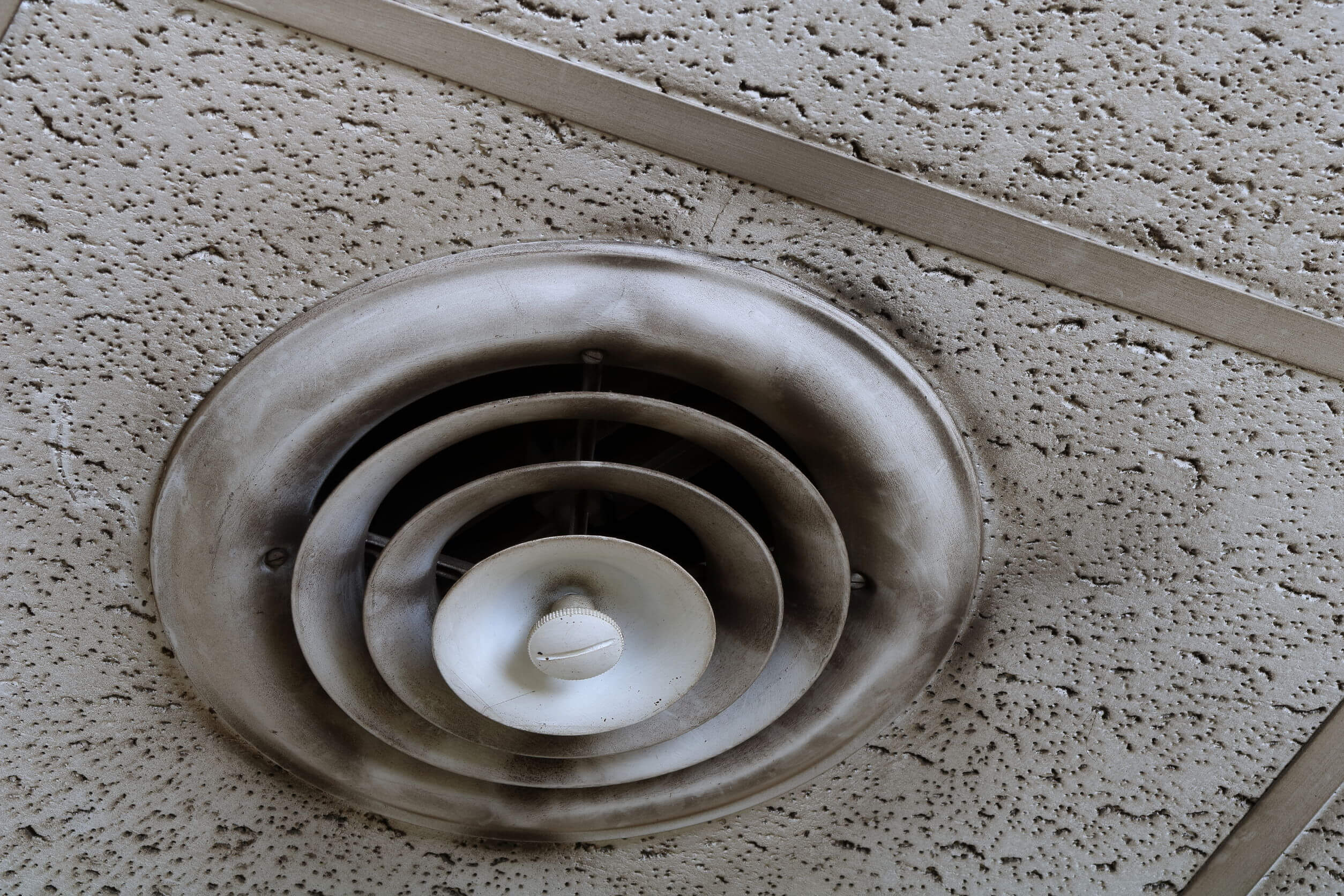There are many sources of poor indoor air quality. You can usually spot them with a test from a certified technician, but you might also notice that the air quality is poor if you have lung or health problems.
Pay attention to any headaches, nausea, lung irritation or constant colds that coincide with a new residence or exposure to new buildings. If symptoms persist, you may have an air quality problem.
Any of the following will cause a problem with your health, even if you don’t notice it at first. Be sure to test houses before you move in and keep the systems inside your house up-todate
Mold
The most common household ailment is mold. Mold can occur due to humidity, improper cleaning, age, or trees that are too close to the house. Mold sometimes occurs in very wet areas like the Pacific Northwest even if it’s not especially humid.
Really aggressive mold can be cleaned with a vinegar solution, but this has quite a strong smell. The best mold prevention is consistent cleaning with clean rags and sponges. Dirty mops and other porous cleaning tools that don’t get washed often tend to be sources of mold.
Smoke
Smoke damage can occur from smoking, but it can also occur from improperly sealed fireplaces or people using fire inappropriately. An example would be using a charcoal grill inside or too close to an open door.
Smoke usually needs several days to a week to air out if you catch it early. If the smoke is constantly coming in, an air filter and an environmental wrap of the house may be required.
Radon
Radon is a naturally occurring compound that comes from stone breaking down in the foundation of a house. To clean it, you can get a radon-minimizing system for the outside of your house. Air filtration is usually not enough to remove radon. Every type of house is susceptible to radon pollution.
VOCs
VOCs can be nearly eliminated by using VOC-free products readily available on the market today. Natural cleaners and special paint are a good idea if you are sensitive to VOCs or have young children.
VOCs come from cleaners, aerosols, paints, and compound strippers. Be careful about bringing these things inside if you are sensitive.
Combustion Devices
Combustion devices are things like gas furnaces or gas-powered stoves. But chemicals can combust in a regular fireplace too. These are a major source of pollutants, so make sure that you get all your heat sources checked regularly to make sure they aren’t leaking unwanted particles into the air.
Recent Articles
Discover practical solutions, innovative techniques, and the latest industry news to create a healthier and fresher environment for you and your loved ones.


